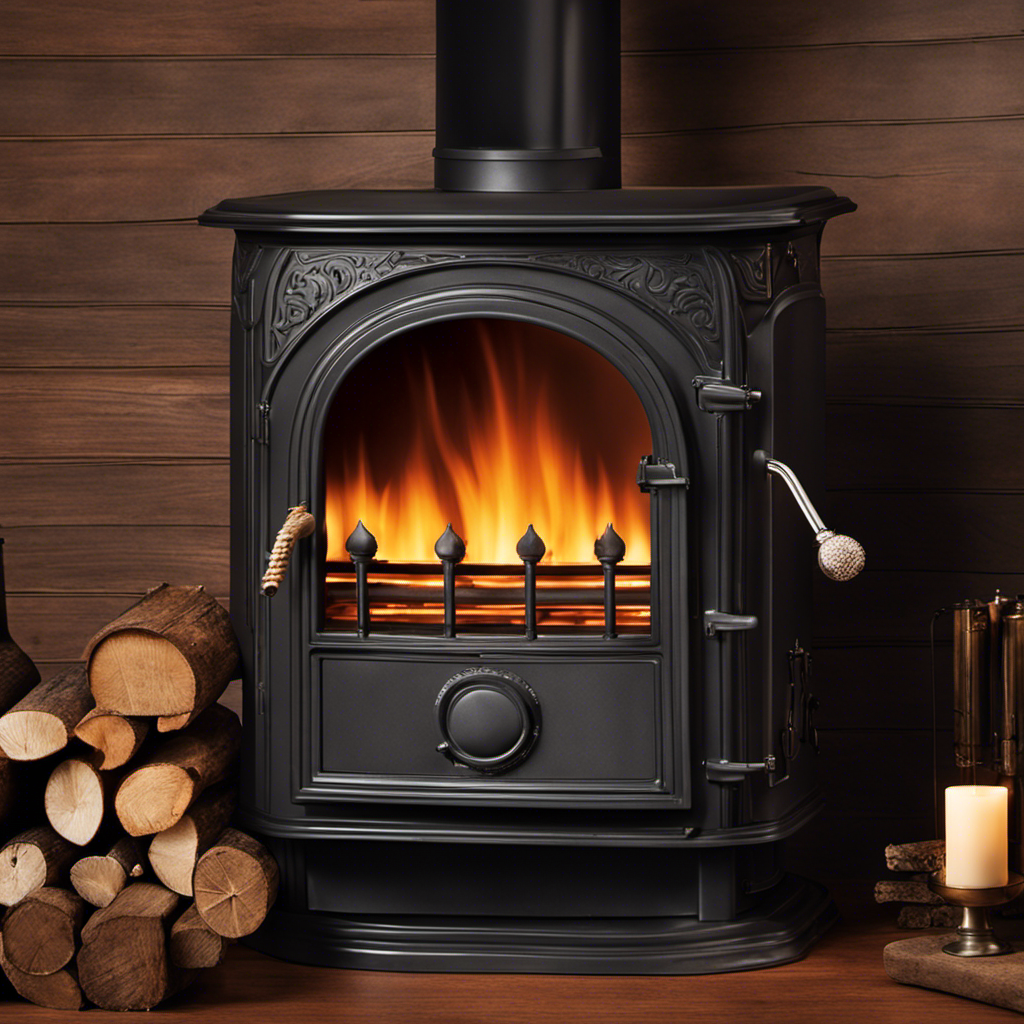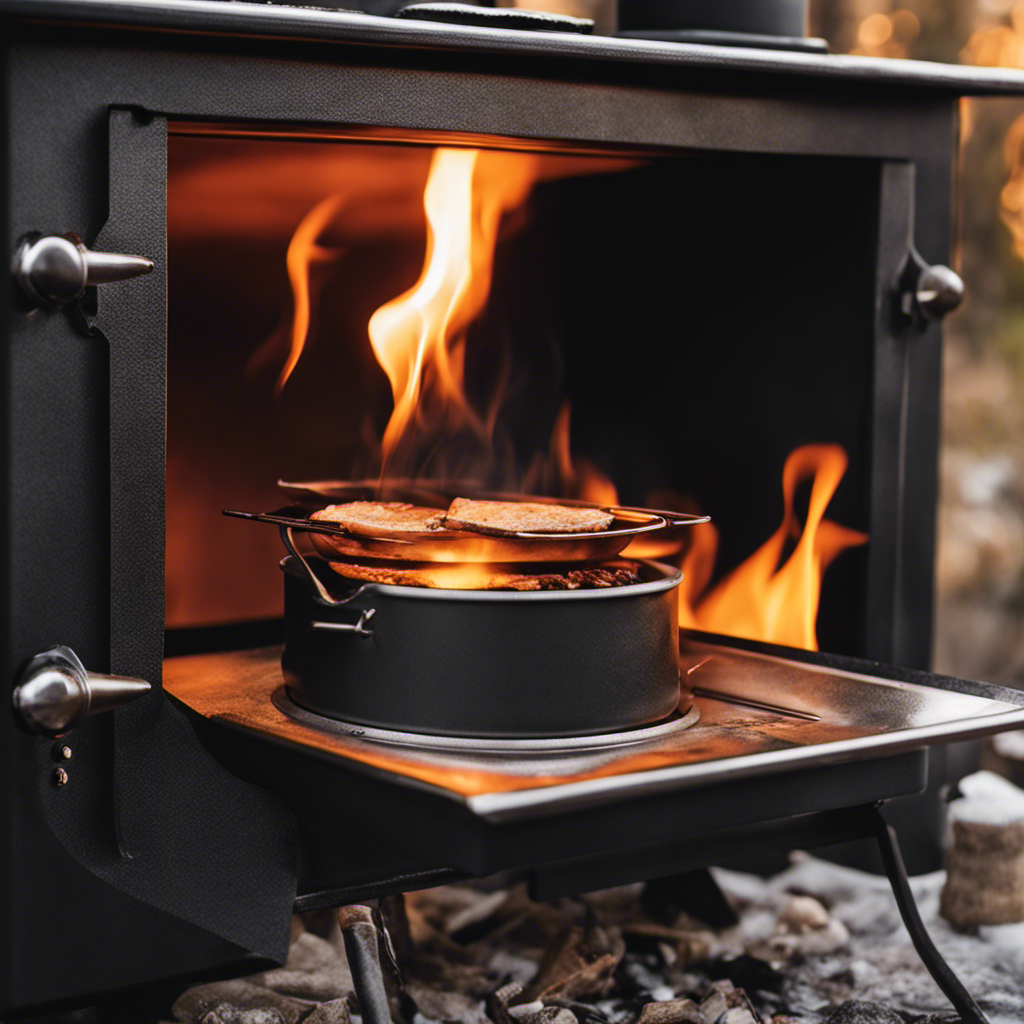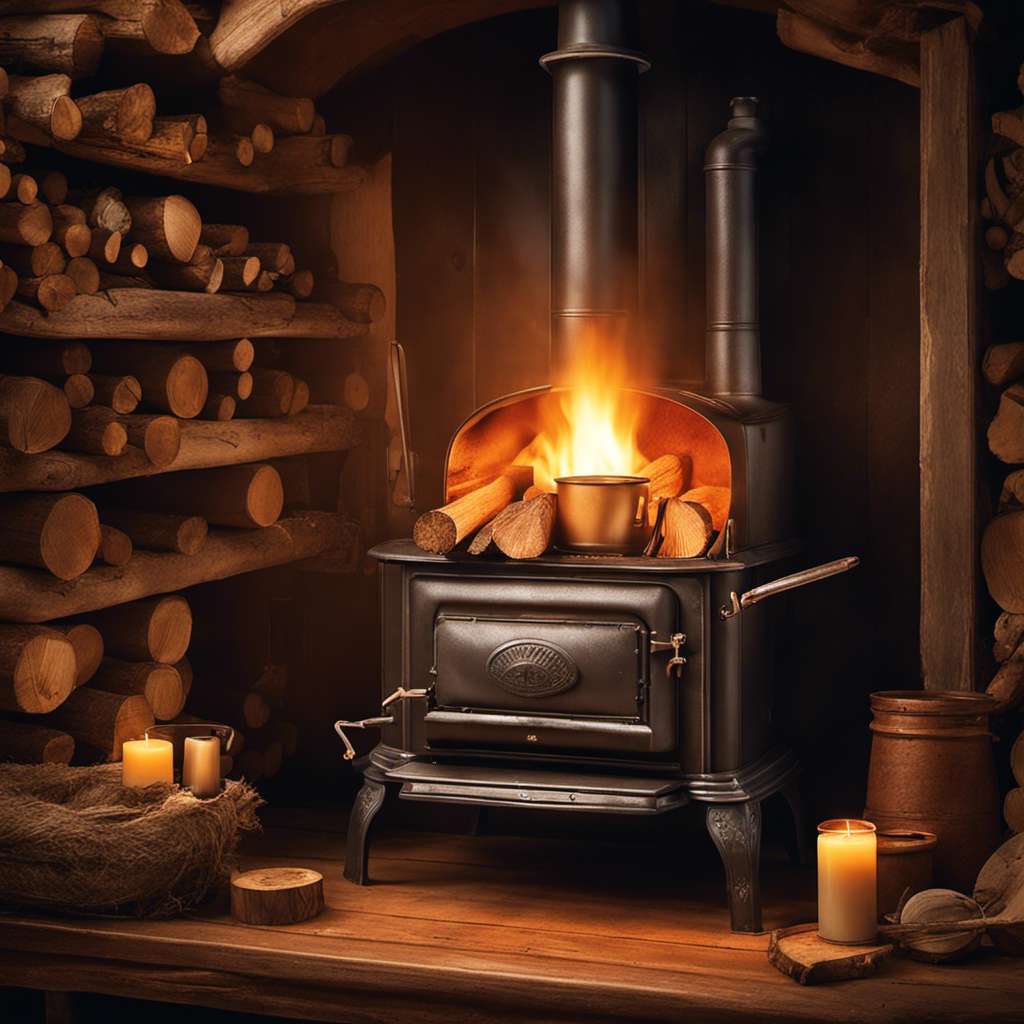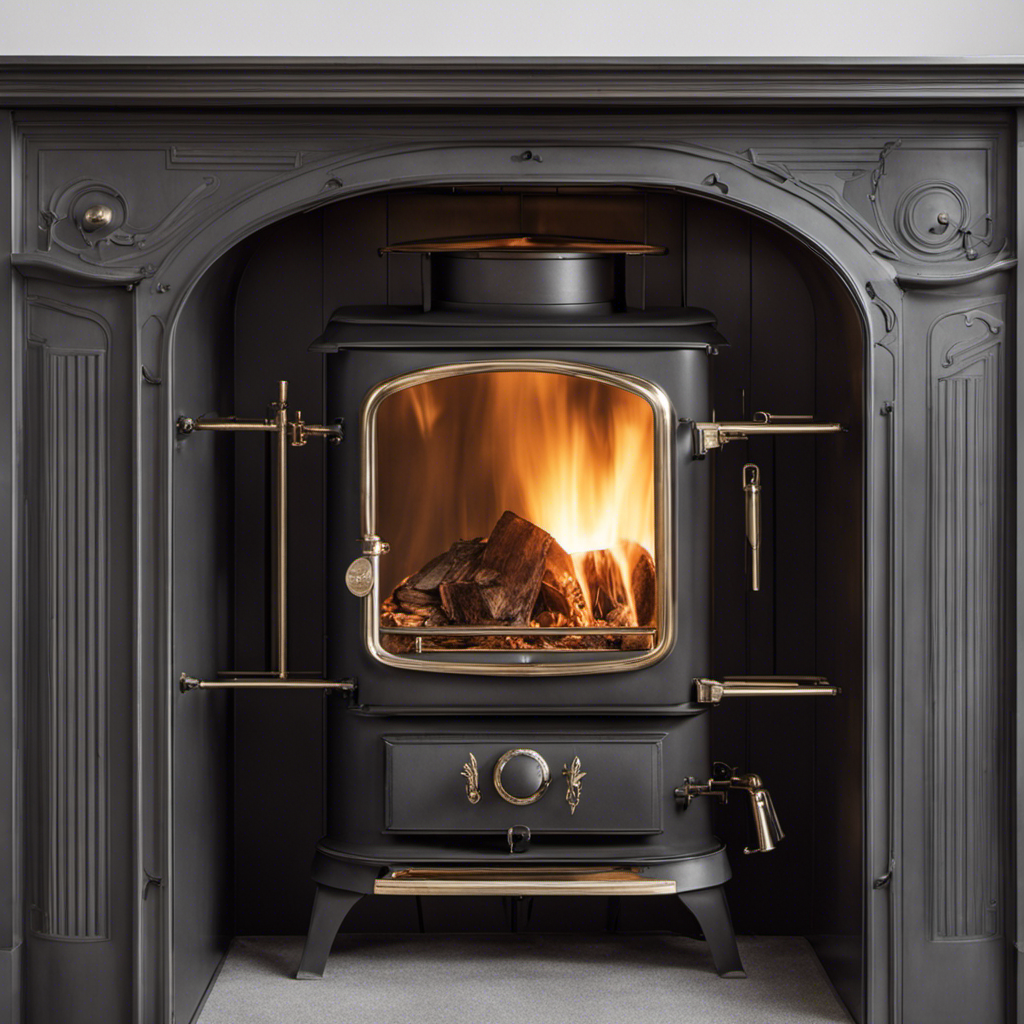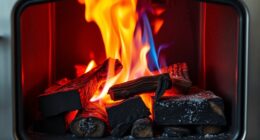I have always been puzzled as to why my wood stove does not effectively heat up my house.
After doing some research, I discovered the importance of air control.
By understanding how to properly adjust the air control settings, I was able to achieve the ideal fire intensity and maximize the heating potential of my wood stove.
In this article, I’ll share my knowledge and provide troubleshooting tips to help you master the art of using air control on your wood stove.
Key Takeaways
- Air control allows for better control over the combustion process.
- Adjusting the air intake regulates the rate of burn and heat generated.
- Mastering air control maximizes heat output and reduces emissions.
- Proper manipulation of air control achieves efficient heating and fuel efficiency.
Understanding the Purpose of Air Control
I can’t fully grasp the purpose of air control on a wood stove. However, understanding the importance of air control is crucial for achieving optimal efficiency. Properly using air control on a wood stove allows for better control over the combustion process, ensuring efficient and clean burning of wood.
By adjusting the air intake, you can regulate the rate of burn and the amount of heat generated. For a slower, longer-lasting burn, you can close the air control, reducing the amount of oxygen reaching the fire. On the other hand, opening the air control allows for a faster and hotter burn.
Mastering the art of air control on a wood stove is essential for maximizing heat output and reducing emissions.
Now, let’s move on to identifying the different air control settings.
Identifying the Different Air Control Settings
Identifying the different air control settings is crucial for effectively regulating the combustion process and achieving optimal heat output on a wood stove. By controlling airflow, we can maximize combustion and ensure efficient burning of wood.
There are typically two main air control settings on a wood stove:
-
Primary Air Control: This setting controls the amount of air entering the firebox. By adjusting the primary air control, we can increase or decrease the intensity of the fire. Opening it fully allows for maximum airflow, resulting in a hotter fire and faster combustion. Closing it partially reduces the airflow, leading to a slower burn and lower heat output.
-
Secondary Air Control: This setting controls the flow of air over the fire. By adjusting the secondary air control, we can control the amount of oxygen available for combustion. Opening it fully allows for a clean and efficient burn, while closing it partially can help maintain a longer burn time.
Mastering the different air control settings is essential for achieving the desired heat output and maximizing the combustion efficiency of a wood stove.
Adjusting the Air Control for Efficient Heating
Although adjusting the air control can be challenging at first, it’s crucial for achieving efficient heating on a wood stove. Maximizing heat output and maintaining a clean burn are two key factors to consider when using a wood stove.
The air control is responsible for regulating the amount of oxygen that enters the firebox, which directly affects the combustion process. By adjusting the air control, you can control the burn rate and ensure that the fire is getting enough oxygen for a clean and efficient burn.
To maximize heat output, you may need to open the air control fully to allow for more oxygen flow. However, it’s important to find the right balance, as too much air can cause excessive heat loss.
Achieving the Ideal Fire Intensity With Air Control
To achieve the ideal fire intensity, I adjust the air control on my wood stove. By properly manipulating the air control, I can maximize fuel efficiency and achieve optimal heat distribution. Here’s how I do it:
-
Adjusting the primary air intake:
-
Opening the primary air intake allows more oxygen into the firebox, increasing the combustion rate and heat output.
-
Closing the primary air intake reduces the amount of oxygen, slowing down the combustion process and conserving fuel.
-
Controlling the secondary air supply:
-
Opening the secondary air supply helps burn any remaining gases and particulate matter, ensuring a cleaner and more efficient burn.
-
Closing the secondary air supply limits the air available for secondary combustion, reducing heat output and saving fuel.
Troubleshooting Common Issues With Air Control on Wood Stove
I sometimes struggle with finding the right balance between primary and secondary air control on my wood stove, but by troubleshooting common issues, I can ensure optimal heat distribution. One of the most common mistakes in using air control on wood stoves is not understanding the purpose of each control and how they work together. To help you maintain optimal air control, here are some tips:
| Common Mistakes | Tips for Optimal Air Control | Troubleshooting |
|---|---|---|
| Closing primary air too soon | Gradually close primary air after the fire is well-established to avoid smoky and inefficient burn. | If the fire is smoky, open the primary air slightly to increase oxygen flow. |
| Leaving secondary air wide open | Adjust secondary air partially open to maintain a clean and efficient burn. | If the fire is too hot or consuming wood too quickly, reduce the secondary air intake. |
| Neglecting regular cleaning | Clean the air vents and stove regularly to prevent blockages and ensure proper air circulation. | If there is poor air control, check for any debris or buildup in the air vents. |
Why is the Secondary Air Tube Important for Controlling the Wood Stove’s Airflow?
The secondary air tube in jotul wood stoves plays a crucial role in controlling the airflow. By introducing additional air into the combustion chamber, this tube ensures efficient and clean burning. The secondary air supply enables increased combustion of remaining gases for reduced emissions and enhanced energy output.
Conclusion
In conclusion, understanding and properly utilizing air control on a wood stove is crucial for efficient and effective heating.
By identifying the different air control settings and adjusting them accordingly, you can achieve the ideal fire intensity for your heating needs.
Remember to troubleshoot common issues that may arise with air control to ensure optimal performance.
With the right knowledge and technique, you can enjoy the benefits of a well-controlled wood stove for a cozy and warm environment.
Logan’s affair with adventure began in childhood. He hailed from a small town where vast forests bordered one side and endless shores stretched on the other. His days were spent exploring uncharted woods, climbing tall trees, or listening to the tales of old sailors. This early immersion in a world brimming with stories and mysteries became the foundation of his passion for writing.

